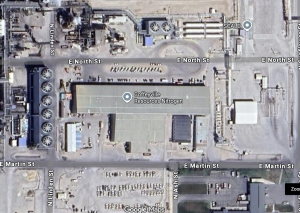
Leak Sends 15 People to Hospital
An ammonia leak at the CVR nitrogen plant in Coffeyville, Kansas hospitalized at least 15 people this past weekend. The incident occurred around 4 p.m. on Saturday, triggering alarms and emergency response from multiple towns.
EMS calls came in from Independence, Caney, Tyro, and Cherryvale. Some patients were taken to Coffeyville Regional Medical Center, while others went to hospitals in Independence and surrounding areas.
Montgomery County Sheriff Ron Wade issued a public statement, offering support and expressing gratitude to first responders.
What Officials Say So Far
Brandee Stephens, Senior Director of Corporate & Governmental Affairs for CVR Partners (headquartered in Sugar Land, Texas), confirmed the ammonia release at the plant’s nitrogen facility. The company said it will conduct a full investigation into how the leak happened.
Later, the City of Coffeyville issued a statement: “The city is aware of the refinery situation. At this time, there are no threats to the public.” Officials stressed that residents should avoid speculation and rely on official updates.
Risk and Recovery Efforts
Ammonia is a hazardous gas that can irritate the eyes and respiratory system. In high concentration, it becomes dangerous to human health. The response team worked to isolate the release and ensure air quality remained safe.
Emergency crews evacuated workers from sensitive zones. Hazmat units measured concentrations, and ventilation systems dispersed gas. First responders also coordinated hospital triage for affected individuals.
CVR has not yet detailed the volume of ammonia that escaped. Observers expect a full root cause assessment in coming days, including checks on vapor systems, piping, and preventive maintenance records.
Broader Implications for Industry Safety
This leak highlights persistent risk in nitrogen fertilizer and chemical operations. Many facilities operate around tight tolerances, aging infrastructure, and high-stakes materials.
Industry leaders say safety protocols, real-time monitoring, and strong regulatory oversight must improve to prevent similar events. The incident may also spark federal or state reviews into how ammonia facilities maintain safety margins in emission control, pipe integrity, and emergency response readiness.
As investigation continues, area residents, local officials, and CVR leadership watch closely for findings that will dictate future plant operations and community safeguards.

